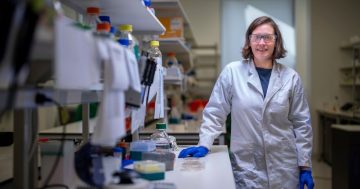
Dr Chin Wong and a team of plant scientists from the ANU have helped discover a way to create more water-efficient plants. Photo Tracey Nearmy.
Researchers from the Australian National University (ANU) have discovered a mechanism in plants that allow them to intake CO2 without losing water.
Research into this mechanism has been underway for the last 14 years, ever since Dr Chin Wong theorised about a similar mechanism.
Dr Wong is currently a visiting fellow at the ANU and has been looking into maximising photosynthesis and preventing water loss in plants. With over 40 years’ experience, Dr Wong was one of the leading researchers on this groundbreaking discovery.
The paper describes how plants use small pores called stomata to take in CO2 at the cost of some of the plant’s internal water vapour drying up. The opening of these pores and loss of water is part of the reason plants need so much water to survive.
With this discovery, it may be possible to create more resilient and water-efficient plants that could be effectively drought resistant.
“It is amazing to find something like this,” Dr Wong said.
“For a long time we thought that the plant’s pore controlled the water loss and CO2 intake, and when they were open, it lost water but gained CO2,”
“We now know that water loss can be controlled while the pores are wide open and taking in CO2.”
Dr Wong said that it had been difficult to get to where they are now and that much of their work had been restricted by the availability of technology.
“It was extremely difficult to measure and corroborate how humid air within a plant is, which is part of what we have been working on over the past few years.
“There are only two places we can test this and one of them is on the other side of the planet,” he said.
The focus for these researchers is to better understand the mechanism itself; its currently thought that proteins called ‘Aquaporins’ are controlling the movement of water.
By understanding how the mechanism works, Dr Wong hopes to be able to maximise photosynthesis in plants to help create high-yield, low-demand plants.





















